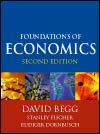 |
1 |  | 
All of the following are types of monetary policy except |
|  | A) | a nominal money stock target |
|  | B) | a balanced budget |
|  | C) | an inflation target |
|  | D) | the pursuit of a target real interest rate |
 |
 |
2 |  | 
An increase in government spending will stimulate private spending by causing a reduction in interest rates |
|  | A) | TRUE |
|  | B) | FALSE |
 |
 |
3 |  | 
The classical model of macroeconomics assumes |
|  | A) | wages and prices are sticky |
|  | B) | wages and prices are flexible |
|  | C) | the economy may operate below full capacity |
|  | D) | the economy is always at full capacity |
|  | E) | a and c |
|  | F) | b and d |
 |
 |
4 |  | 
The AD schedule indicates that __________ inflation is associated with ___________ output |
|  | A) | higher, lower |
|  | B) | higher, higher |
|  | C) | lower, lower |
|  | D) | zero, zero |
 |
 |
5 |  | 
In the classical model the AS schedule is vertical |
|  | A) | TRUE |
|  | B) | FALSE |
 |
 |
6 |  | 
If a person thinks they are better off after a 10% wage increase, and all prices have risen 10%, then they are experiencing ___________ |
|  | A) | inflation |
|  | B) | a supply shock |
|  | C) | crowding out |
|  | D) | inflation illusion |
 |
 |
7 |  | 
In the classical model, potential output can not be increased by |
|  | A) | monetary growth |
|  | B) | better technology |
|  | C) | more capital |
|  | D) | higher labour supply |
 |
 |
8 |  | 
The equilibrium inflation rate is determined by the intersection of __________ and _________ |
|  | A) | demand, supply |
|  | B) | IS, LM |
|  | C) | AD, AS |
|  | D) | Labour demand, labour supply |
 |
 |
9 |  | 
At the intersection of AD and AS equilibrium is achieved in |
|  | A) | the goods market |
|  | B) | the money market |
|  | C) | the labour market |
|  | D) | all of the above |
 |
 |
10 |  | 
Fiscal expansion in the classical model can increase real output |
|  | A) | TRUE |
|  | B) | FALSE |
 |
 |
11 |  | 
The Keynesian model is a good guide to _________ behaviour and the classical model describes behaviour in _____________ |
|  | A) | long run, short run |
|  | B) | flexible, imperfect markets |
|  | C) | short-term, long run |
|  | D) | long run, imperfect markets |
 |
 |
12 |  | 
Temporary supply shocks alter potential output |
|  | A) | TRUE |
|  | B) | FALSE |
 |
 |
13 |  | 
Expansionary fiscal policy in the classical model will cause aggregate demand to ________ potential output |
|  | A) | exceed |
|  | B) | fall below |
|  | C) | fluctuate around |
|  | D) | remain equal to |
 |
 |
14 |  | 
In the event of an increase in the international price of oil that encouraged the central bank to accept lower real interest rates, inflation would most likely __________ |
|  | A) | fall |
|  | B) | increase |
|  | C) | remain the same |
|  | D) | fluctuate |
 |
 |
15 |  | 
The quantity theory of money says that changes in ___________ lead to equivalent changes in __________, but have no effect on ___________ |
|  | A) | prices, wages, output and employment |
|  | B) | output, prices, employment |
|  | C) | nominal money, the price level, output and employment |
|  | D) | nominal money, output, prices |
 |
 |
16 |  | 
Monetarists believe that a reduction in _____________can be achieved by reducing ________ |
|  | A) | unemployment, prices |
|  | B) | inflation, wages |
|  | C) | unemployment, wages |
|  | D) | inflation, the quantity of nominal money |
 |
 |
17 |  | 
Faster nominal money growth leads to either higher inflation or higher nominal interest rates, but not both |
|  | A) | TRUE |
|  | B) | FALSE |
 |
 |
18 |  | 
During periods of rising inflation and rising interest rates we expect the demand for real cash to |
|  | A) | rise |
|  | B) | fall |
|  | C) | not change |
|  | D) | fluctuate |
 |
 |
19 |  | 
Governments may contribute to inflationary pressure on account of building up large _________ |
|  | A) | numbers of employees |
|  | B) | welfare plans |
|  | C) | budget deficits |
|  | D) | expenditure |
 |
 |
20 |  | 
The Phillips curve shows the trade-off between ____________ and ____________ |
|  | A) | the inflation rate, interest rates |
|  | B) | the inflation rate, the unemployment rate |
|  | C) | interest rates, output |
|  | D) | output, employment |
 |
 |
21 |  | 
Equilibrium unemployment is determined by the underlying rate of inflation |
|  | A) | TRUE |
|  | B) | FALSE |
 |
 |
22 |  | 
The long-run Phillips curve is __________ at the ________________ |
|  | A) | horizontal, natural rate of inflation |
|  | B) | horizontal, natural rate of unemployment |
|  | C) | vertical, natural rate of inflation |
|  | D) | vertical, equilibrium rate of unemployment |
 |
 |
23 |  | 
The short run Phillips curve can shift in response to changes in ____________ |
|  | A) | Inflationary expectations |
|  | B) | unemployment |
|  | C) | the inflation rate |
|  | D) | wage rates |
 |
 |
24 |  | 
The costs of inflation are |
|  | A) | shoe leather costs |
|  | B) | menu costs |
|  | C) | income redistribution |
|  | D) | uncertainty |
|  | E) | all of the above |
 |
 |
25 |  | 
Only an incomes policy can deliver low inflation in the long run |
|  | A) | TRUE |
|  | B) | FALSE |
 |
 |
26 |  | 
A person who is made redundant because of the contraction of an industry is a victim of ____________ |
|  | A) | frictional unemployment |
|  | B) | demand-deficient unemployment |
|  | C) | classical unemployment |
|  | D) | structural unemployment |
 |
 |
27 |  | 
An advocate of the classical model of the economy would claim that unemployment is created when the ________ is above its equilibrium level in the ____________ |
|  | A) | price level, aggregate economy |
|  | B) | tax rate, government budget |
|  | C) | wage rate, labour market |
|  | D) | interest rate, market for loanable funds |
 |
 |
28 |  | 
The natural rate of unemployment, (equilibrium unemployment), will always be zero |
|  | A) | TRUE |
|  | B) | FALSE |
 |
 |
29 |  | 
We would normally expect the size of the labour force to be __________ than the number of workers willing to accept job offers at any real wage rate |
|  | A) | smaller |
|  | B) | larger |
|  | C) | the same size |
 |
 |
30 |  | 
The equilibrium rate of unemployment, at any real wage, is the difference between ____________ and _________ |
|  | A) | those willing to work at the going wage, labour demand |
|  | B) | labour demand, those willing to work at the going wage |
|  | C) | labour demand, labour supply |
|  | D) | those willing to work at the going wage, labour supply |
 |
 |
31 |  | 
If somebody is prepared to work at the going wage rate but cannot find work then they are victims of |
|  | A) | voluntary unemployment |
|  | B) | classical unemployment |
|  | C) | voluntary unemployment |
|  | D) | Frictional unemployment |
 |
 |
32 |  | 
Policies to reduce unemployment by reducing union power, tax cuts, reductions in unemployment benefit and investment subsidies are examples of _________ |
|  | A) | Keynesian policies |
|  | B) | Supply-side policies |
|  | C) | Monetarist policies |
|  | D) | Classical policies |
 |
 |
33 |  | 
If the income tax rate changes from 30% to 40% on incomes over £30,000 and a person's income is £31,000 then her marginal tax rate is _________ |
|  | A) | 30% |
|  | B) | 10% |
|  | C) | 70% |
|  | D) | 40% |
 |
 |
34 |  | 
The abolition of income tax would probably ___________ the number of workers in employment and __________ the equilibrium rate of unemployment |
|  | A) | increase, reduce |
|  | B) | increase, increase |
|  | C) | reduce, increase |
|  | D) | reduce, reduce |
 |
 |
35 |  | 
Possible causes of involuntary unemployment are |
|  | A) | minimum wage agreements |
|  | B) | trade unions |
|  | C) | scale economies |
|  | D) | insider-outsider distinctions |
|  | E) | efficiency wages |
|  | F) | all of the above |
 |
 |
36 |  | 
If a worker chooses not to work at the equilibrium wage rate they are involuntarily unemployed |
|  | A) | TRUE |
|  | B) | FALSE |
 |




 2003 A McGraw-Hill Online Learning Centre
2003 A McGraw-Hill Online Learning Centre